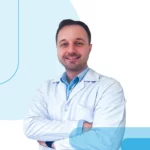
Schroth Treatment: A Comprehensive Guide to Scoliosis Management

Scoliosis is a complex spinal condition characterized by abnormal sideways curvature of the spine, often accompanied by rotation. Schroth Treatment, developed by Katharina Schroth in the early 20th century, is a specialized physical therapy approach designed to address scoliosis through corrective exercises, postural awareness, and breathing techniques. This holistic method aims to halt or reduce the progression of scoliosis, improve spinal alignment, and enhance overall function and quality of life for individuals with this condition.
Understanding Scoliosis: Before delving into Schroth Treatment, it’s essential to grasp the fundamentals of scoliosis. This condition can develop during childhood or adolescence, typically during periods of rapid growth, although it can also occur in adulthood. While the exact cause of scoliosis is often unknown (idiopathic scoliosis), it can also result from congenital abnormalities, neuromuscular disorders, or other underlying medical conditions. Scoliosis varies in severity, ranging from mild curvature to more pronounced deformities that can affect posture, mobility, and organ function.
The Principles of Schroth Treatment: Schroth Treatment is grounded in the understanding that scoliosis is a three-dimensional deformity that affects the entire body’s alignment, not just the spine. Therefore, the goals of Schroth Therapy extend beyond simply straightening the spine to include:
Postural Correction: Schroth exercises focus on elongating the spine, de-rotating the vertebrae, and promoting symmetrical alignment of the trunk and pelvis. Patients learn specific postural corrections tailored to their unique curvature patterns to address imbalances and asymmetries.
Breathing Techniques: Proper breathing plays a crucial role in Schroth Therapy, as specific breathing exercises help expand the chest cavity, increase lung capacity, and promote rib mobility. Diaphragmatic breathing and three-dimensional breathing techniques are emphasized to enhance spinal stabilization and optimize posture.
Muscle Strengthening and Flexibility: Schroth exercises target specific muscle groups to strengthen weak muscles, elongate tight muscles, and restore muscular balance around the spine. Isometric and dynamic exercises are prescribed to improve core stability, enhance proprioception, and support postural control.
Education and Self-awareness: Central to Schroth Treatment is empowering patients with knowledge about their condition and teaching self-management strategies for daily activities. Patients learn to incorporate postural corrections and breathing techniques into their daily routines to maintain spinal alignment and prevent progression.
The Treatment Process: Schroth Treatment typically begins with a thorough assessment by a certified Schroth therapist, who evaluates the patient’s spinal curvature, posture, flexibility, and functional limitations. Based on this assessment, an individualized treatment plan is developed, consisting of specific exercises and postural corrections tailored to the patient’s unique curvature pattern and needs. Treatment sessions may be conducted one-on-one or in group settings, with regular monitoring and adjustment of the treatment plan as needed to track progress and address any challenges.
Evidence-Based Benefits: Numerous studies have documented the effectiveness of Schroth Treatment in reducing scoliosis curvature, improving postural alignment, and enhancing quality of life for patients with scoliosis. Research suggests that Schroth Therapy can lead to significant improvements in spinal curvature, pain reduction, and functional outcomes, particularly when combined with other conservative treatments such as bracing or spinal mobilization.
Conclusion: Schroth Treatment offers a non-invasive, holistic approach to managing scoliosis that addresses the underlying structural and functional issues associated with this condition. By emphasizing postural correction, breathing techniques, and targeted exercises, Schroth Therapy aims to optimize spinal alignment, improve muscular balance, and empower patients to take an active role in their scoliosis management. With its evidence-based approach and individualized treatment plans, Schroth Therapy provides hope and support for individuals living with scoliosis, helping them achieve better spinal health and overall well-being.
Similar Interests and Treatments

Orthopedic Rehabilitation
Explore the essential aspects of orthopedic rehabilitation, including treatment modalities, goals, and outcomes, to understand how it can help individuals recover from musculoskeletal injuries and conditions.
Neurological Rehabilitation
Learn about the fundamental principles, treatment modalities, and benefits of neurological rehabilitation for individuals with brain or nervous system injuries or diseases. Discover how physical therapy, speech therapy, occupational therapy, and psychological support play essential roles in improving functional impairments and enhancing quality of life.
Robot Therapy in Rehabilitation
Explore the principles, advancements, and applications of robot therapy in rehabilitation, highlighting its potential benefits for patients undergoing recovery. Discover how robotic devices assist individuals in regaining mobility, improving motor function, and enhancing overall quality of life following injury or illness.
Posture Exercise
Learn about the significance of posture exercises in improving body alignment, strengthening muscles, and promoting overall health and well-being. Discover the benefits of posture exercises and how they contribute to alleviating pain, preventing injury, and enhancing body awareness.
Clinical Pilates
Discover the benefits of clinical Pilates for improving core strength, flexibility, and overall physical function. Learn how mindful movement, breathwork, and personalized instruction can support rehabilitation, injury prevention, and lifelong health and wellness.
Gait Analysis (Foot Balance)
Explore the benefits, process, and applications of gait analysis in physical therapy and rehabilitation. Learn how this comprehensive assessment tool helps diagnose, treat, and prevent musculoskeletal and neurological conditions.
Therapeutic Electrical Stimulation (TES)
Discover the diverse applications, benefits, and safety considerations of therapeutic electrical stimulation (TES) in physical therapy and rehabilitation. Learn how TES can help manage pain, promote muscle strengthening, aid in rehabilitation, facilitate wound healing, and reduce edema while ensuring patient safety and optimal treatment outcomes.
Traction Therapy
Explore the mechanisms, benefits, and applications of traction therapy in physical therapy and rehabilitation, along with safety considerations for individuals with musculoskeletal conditions.
Ultrasound Physical Therapy
Learn about the benefits, applications, and safety considerations of ultrasound therapy in physical rehabilitation. Understand how ultrasound waves can promote tissue healing, reduce pain, and improve function in musculoskeletal conditions.
CGF Stem Cell Therapy (CGF-CD34)
Explore the potential of CGF Stem Cell Therapy in physical therapy and rehabilitation, its mechanism of action, applications, benefits, risks, and considerations for patients seeking regenerative treatment.
Theraband Treatment
Learn about mobilization and manipulation therapy, including its benefits, techniques, indications, contraindications, and safety considerations for effective musculoskeletal rehabilitation.
Mobilization and Manipulation Therapy
Learn about mobilization and manipulation therapy, including its benefits, techniques, indications, contraindications, and safety considerations for effective musculoskeletal rehabilitation.
Paraffin Wax Bath Therapy
Discover the benefits of paraffin wax bath therapy for pain relief, joint mobility, and skin health. Learn about the procedure, safety considerations, and how this therapy can improve your overall well-being.
High-Intensity Laser Therapy (HILT)
Discover the benefits, mechanism of action, applications, and safety considerations of High-Intensity Laser Therapy (HILT) for pain relief and tissue healing.
TENS (Electrotherapy)
Learn about Transcutaneous Electrical Nerve Stimulation (TENS) therapy, including its mechanism of action, effectiveness, applications, and safety considerations.
Schroth Treatment
Discover how Schroth Treatment offers holistic solutions for scoliosis management through postural correction, breathing techniques, and targeted exercises. Learn about its evidence-based approach and individualized treatment plans for better spinal health and overall well-being.
Inductive Therapy
Explore the benefits of Magnetic Inductive Therapy (MIT) in managing chronic pain, promoting tissue regeneration, and enhancing healing. Learn about its mechanisms, applications, and evidence-based benefits in various medical conditions.
Whirpool (Swirl Bath)
Explore the benefits, applications, techniques, and considerations associated with whirlpool treatment in physical therapy and rehabilitation. Learn how this therapeutic modality offers pain relief, improves circulation, promotes muscle relaxation, aids wound healing, and enhances psychological well-being for individuals recovering from musculoskeletal injuries and conditions.
Medical Massage
Discover the benefits of medical massage in physical therapy and rehabilitation. Learn about its applications, techniques, and how it aids in pain relief, mobility improvement, and overall well-being.
Interferential Current (IFC) Therapy
Learn about the benefits, process, and effectiveness of Interferential Current (IFC) therapy for pain management and rehabilitation. Discover how this non-invasive electrotherapy treatment can help relieve pain, reduce inflammation, and promote healing.
Extracorporeal Shock Wave Therapy
Learn about the benefits, procedure, expected outcomes, and potential risks of Extracorporeal Shock Wave Therapy (ESWT) as a non-invasive treatment option for various musculoskeletal conditions.
Get a Free Second Opinion

I consent to Burtom Health Group using my aforesaid personal data for the purposes described in this notice and understand that I can withdraw my consent at any time by sending a request to info@burtom.com.










